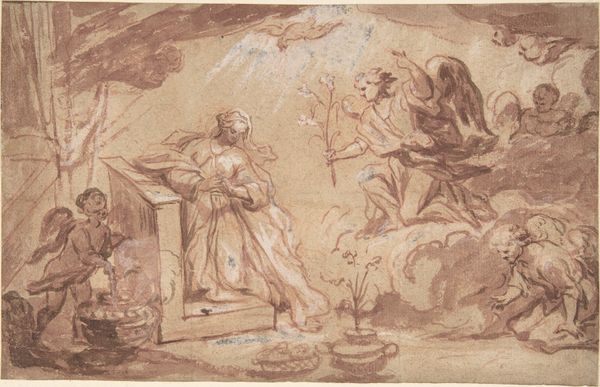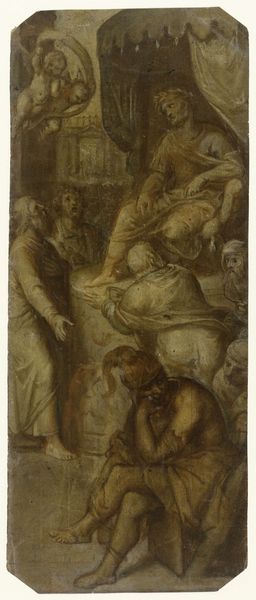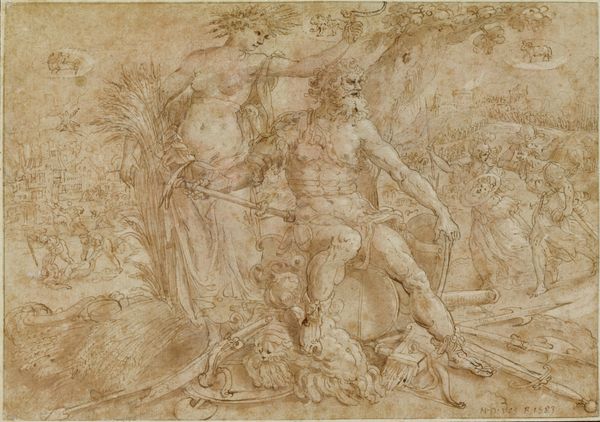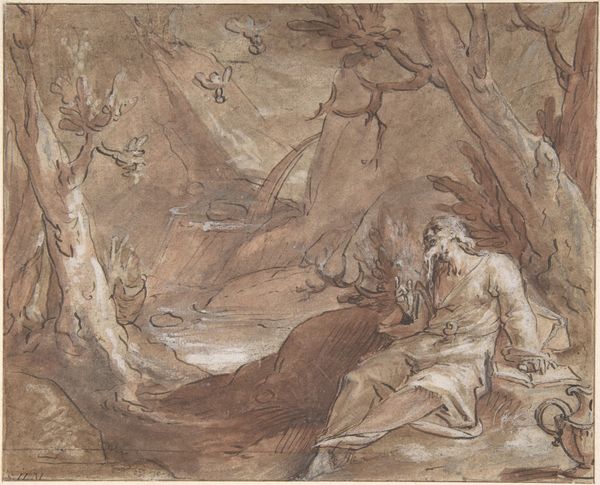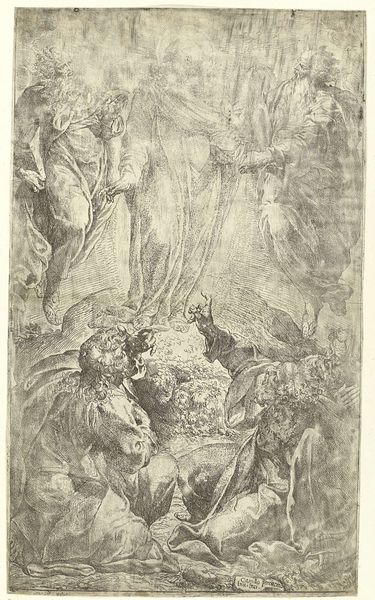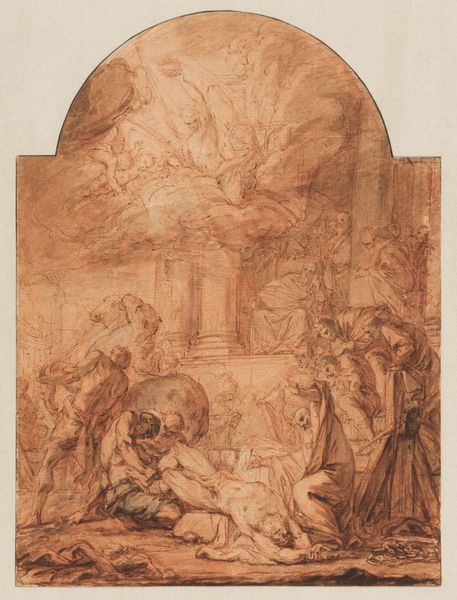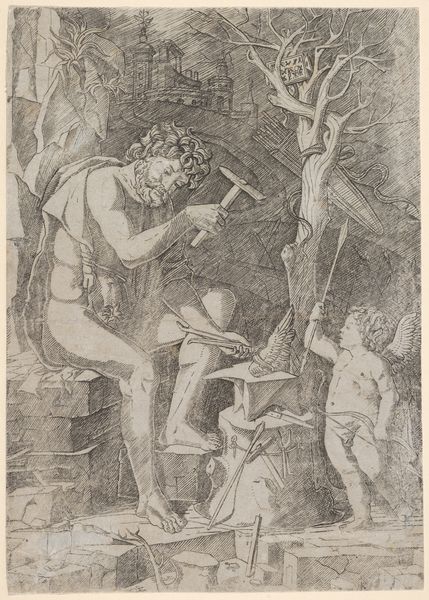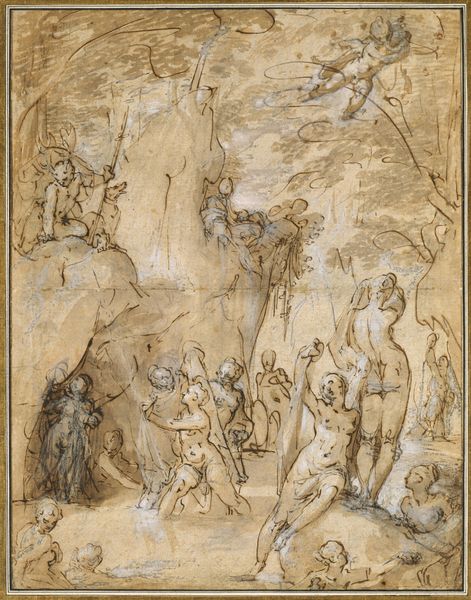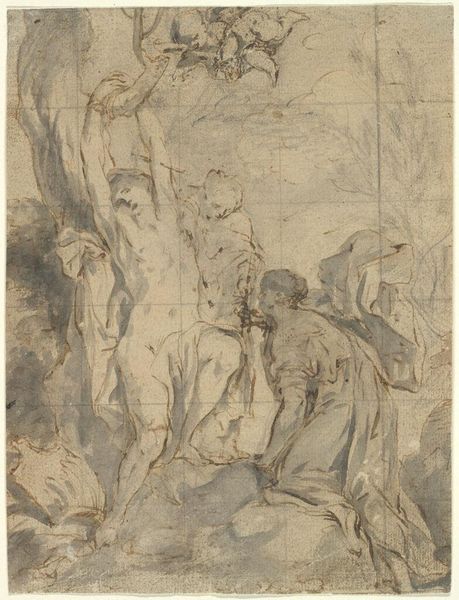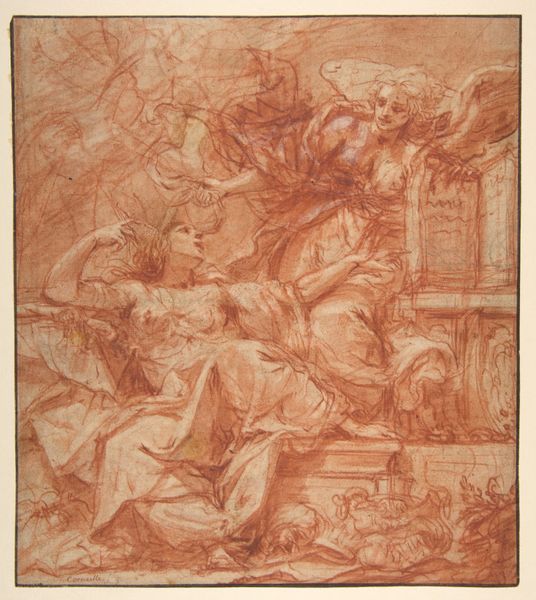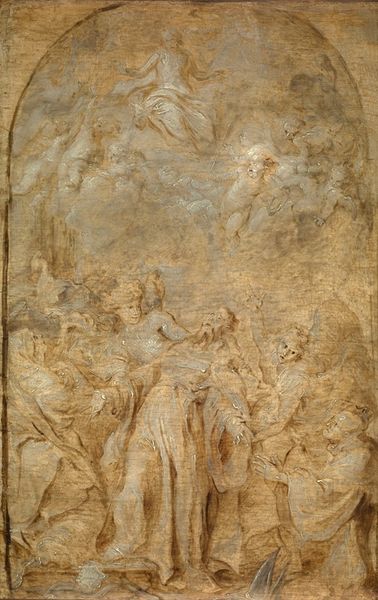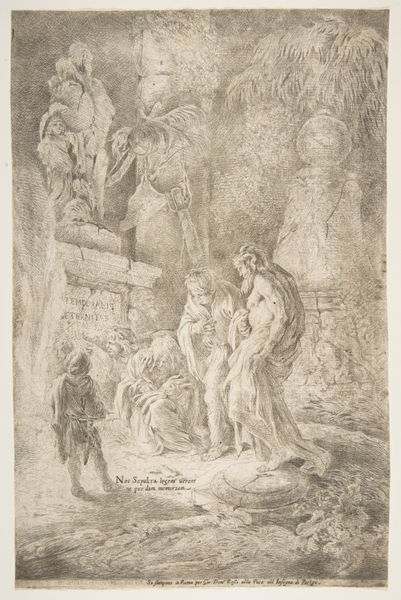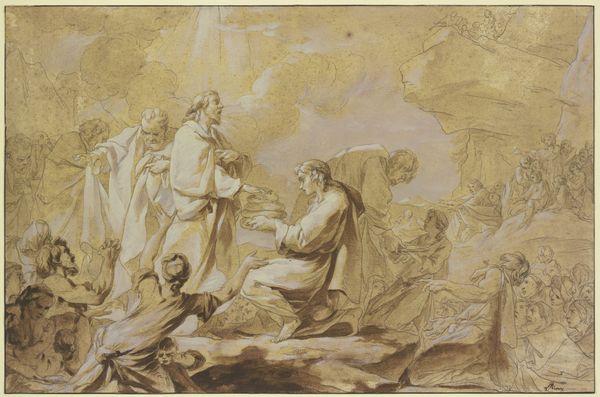
drawing
#
drawing
#
abstract painting
#
charcoal drawing
#
possibly oil pastel
#
charcoal art
#
oil painting
#
fluid art
#
acrylic on canvas
#
underpainting
#
france
#
painting painterly
#
watercolor
Dimensions: 18 x 12 1/4 in. (45.72 x 31.12 cm) (image)
Copyright: Public Domain
Editor: This is "Theseus Recovering the Armor of Aegeus," a drawing from around 1780 by François Valentin, housed right here at the Minneapolis Institute of Art. It’s a striking terracotta color and looks almost like it's aged on purpose. It seems to be a really intense moment. What do you see in this piece, as someone so versed in iconography? Curator: It’s fascinating how Valentin taps into the enduring power of the Theseus myth. Observe the central obelisk, a direct visual descendant of ancient Egyptian obelisks—symbols of stability, power, and the sun god Ra. How do you think that translates into this specific narrative moment? Editor: Well, considering Theseus is finding his father's armor… perhaps the obelisk is a symbol of Aegeus's authority and legacy, which Theseus is now stepping into? Curator: Precisely. It’s more than just armor; it's a mantle of leadership, a cultural inheritance. Look at how the figures interact: the forward-pointing child, a gesture toward the future; the mother, a protective, guiding figure. What feelings or concepts do those visual relationships suggest? Editor: Hmmm, maybe that he’s not just becoming a leader but also starting a family legacy too? He’s recovering his armor and also stepping into a future as a leader, husband, and father? Curator: Exactly! Notice also the strategic use of color: that monochromatic red chalk evokes classical sculpture, grounding the scene in antiquity, connecting to a cultural memory of heroes and legends. Do you think this drawing feels like a finished artwork? Editor: Not really. It almost feels like a sketch, yet the narrative is complete, powerful, ready to be scaled into a monumental artwork. Thank you, this was incredibly insightful! Curator: My pleasure! Exploring these connections illuminates how images across time, how simple shapes and figures contain narratives we understand on a primal level.
Comments
No comments
Be the first to comment and join the conversation on the ultimate creative platform.
